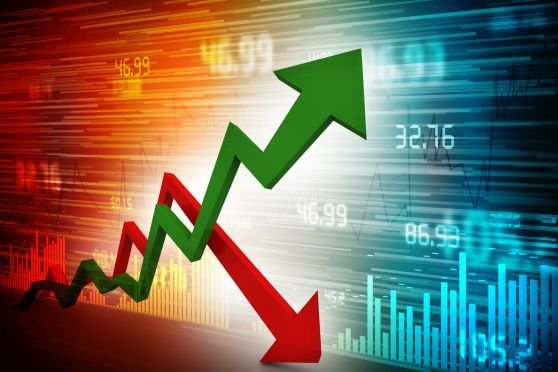Cryptocurrency has changed the financial landscape. Bitcoin dominates the headlines, but altcoins have grown significantly in recent years. In 2025, altcoins could experience unprecedented success due to key factors like technological advancements, market trends, regulatory clarity, and expanding utility.
Rising Adoption of Blockchain Technology
The adoption of blockchain technology has surged globally. Governments, corporations, and startups have recognized its potential. Altcoins, built on various blockchain networks, offer tailored solutions for industries like finance, healthcare, and logistics. This growing demand could drive their value in 2025.
Decentralized finance (DeFi) applications thrive on altcoin ecosystems. Ethereum, Solana, and Cardano lead the charge, enabling financial tools such as lending, staking, and yield farming. As more users enter DeFi, the demand for altcoins powering these platforms will grow.
Non-fungible tokens (NFTs) continue to dominate the art and gaming sectors. Altcoins like Ethereum, Flow, and Tezos serve as the backbone of NFT transactions. Expanding NFT marketplaces could increase the relevance of altcoins in the coming years.
Diversification of Blockchain Networks
Bitcoin faces scalability issues. Altcoins provide alternative solutions with faster transaction speeds and lower fees. Layer 2 solutions and innovative networks, like Polkadot and Avalanche, offer scalability without compromising decentralization. These features attract developers and users.
Competition among blockchain networks fosters innovation. Altcoins introduce advanced consensus mechanisms such as Proof of Stake (PoS) and Delegated Proof of Stake (DPoS). These mechanisms reduce energy consumption while maintaining security, aligning with global sustainability goals.
Cross-chain interoperability strengthens the altcoin ecosystem. Projects like Cosmos and Polkadot allow seamless communication between different blockchains. This connectivity boosts efficiency and broadens the utility of altcoins, making them attractive investments in 2025.
Increasing Institutional Interest
Institutions have started investing in cryptocurrencies beyond Bitcoin. Hedge funds, asset managers, and corporations allocate funds to altcoins, diversifying their portfolios. Ethereum remains a favorite due to its robust ecosystem, but other altcoins like Polygon, Chainlink, and Solana also attract interest.
The introduction of regulated financial products, such as exchange-traded funds (ETFs), has made altcoin investment accessible to traditional investors. Institutional participation could inject significant capital into the altcoin market, driving prices higher.
Partnerships between altcoin projects and established corporations validate their potential. For example, VeChain collaborates with logistics and retail giants, while Chainlink integrates with major data providers. Such partnerships strengthen the credibility and utility of altcoins.
Regulatory Clarity
Regulatory uncertainty has historically hindered the cryptocurrency market. Governments worldwide now recognize the need for clear frameworks. In 2025, improved regulations could boost altcoin adoption by reducing fear and uncertainty.
Regulations often focus on consumer protection, anti-money laundering, and financial transparency. Altcoins adhering to these guidelines can gain mainstream acceptance. Projects like Stellar and Ripple aim to bridge traditional finance with blockchain technology, complying with regulatory standards.
Stablecoins, pegged to fiat currencies, have become essential in the altcoin ecosystem. Regulatory clarity surrounding stablecoins could stabilize the market, encouraging further use of altcoins in payments and remittances.
Advancements in Layer 2 Solutions
Scalability remains a key challenge for blockchain networks. Layer 2 solutions address this issue effectively. Technologies like rollups and sidechains process transactions off-chain, reducing congestion on main networks. Altcoins benefit significantly from these advancements.
Ethereum’s transition to Ethereum 2.0 introduces sharding and PoS, enhancing scalability and efficiency. Altcoins built on Ethereum, such as Uniswap and Aave, could flourish due to these upgrades.
Polygon, an Ethereum Layer 2 solution, has shown remarkable growth. Its ability to reduce fees and increase transaction speed makes it a preferred platform for developers. Similar solutions in 2025 could elevate the altcoin ecosystem further.
Expanding Use Cases
Altcoins excel in offering diverse use cases beyond currency. Real-world applications drive their adoption. For instance:
- Supply Chain Management: Altcoins like VeChain improve transparency and traceability in supply chains. Companies use these solutions to verify product authenticity.
- Decentralized Storage: Altcoins such as Filecoin and Arweave provide secure and decentralized data storage, challenging traditional cloud providers.
- Gaming and Virtual Worlds: Metaverse projects, powered by altcoins like Decentraland and Sandbox, redefine gaming and virtual reality. In-game assets and land ownership drive demand for these tokens.
- Identity Management: Projects like Civic and SelfKey offer blockchain-based identity verification, ensuring data security and privacy.
These applications solve real-world problems, ensuring altcoins remain relevant.
Evolution of Tokenomics
Altcoins rely on innovative tokenomics to attract investors. Tokenomics defines the supply, distribution, and utility of tokens. Projects implementing deflationary mechanisms or staking rewards create scarcity, driving value.
Burn mechanisms, like those used by Binance Coin (BNB), reduce the total supply over time. This strategy increases the token’s scarcity and price. In 2025, more altcoins may adopt similar methods.
Staking rewards incentivize users to hold tokens. Cardano and Solana allow users to earn passive income by staking. Such features enhance investor confidence and foster long-term commitment.
The Role of Emerging Markets
Emerging markets play a pivotal role in the growth of altcoins. Countries with limited access to traditional banking systems adopt blockchain technology rapidly. Altcoins enable financial inclusion by providing access to digital wallets, remittances, and microloans.
Africa, Southeast Asia, and Latin America have shown significant interest in altcoin adoption. Governments in these regions explore blockchain solutions for governance, identity management, and cross-border payments. Altcoins catering to these needs could thrive in 2025.
Mobile-first blockchain platforms, such as Celo, address the unique challenges of emerging markets. These projects ensure accessibility and affordability, driving widespread adoption.
The Rise of Decentralized Autonomous Organizations (DAOs)
DAOs empower communities to govern projects collectively. Altcoins often serve as governance tokens in DAOs. Token holders vote on proposals, ensuring transparency and fairness.
DAOs enable innovation across industries. For example, investment DAOs allow users to pool funds for venture capital. Media DAOs decentralize content creation and distribution. These models could gain traction in 2025, increasing demand for altcoins.
Projects like MakerDAO and Aragon have already demonstrated the potential of DAOs. As the concept matures, more altcoins could integrate DAO structures, driving adoption.
Challenges and Risks
While 2025 holds immense potential, challenges remain. Market volatility, regulatory risks, and technological vulnerabilities could impact altcoin growth.
Scams and rug pulls tarnish the reputation of cryptocurrencies. Investors must conduct due diligence before participating in projects. Education and awareness campaigns can mitigate these risks.
Regulatory overreach could stifle innovation. Balancing consumer protection with innovation remains crucial. Transparent communication between regulators and industry leaders will ensure sustainable growth.
Cybersecurity threats pose another risk. Altcoins must invest in robust security measures to prevent hacks and breaches. Projects prioritizing security will gain trust and credibility.
Conclusion
Altcoins could dominate the cryptocurrency market in 2025. Technological advancements, regulatory clarity, and expanding use cases position them for growth. Institutional interest and emerging markets add further momentum.
Investors and developers should remain vigilant. Understanding market trends and project fundamentals will be key to navigating the altcoin landscape.
The year 2025 promises excitement and opportunities for altcoins. With innovation at its core, the altcoin market could redefine the future of finance and technology.
ALSO READ: Japanese Banks to Adopt XRP: What It Means




